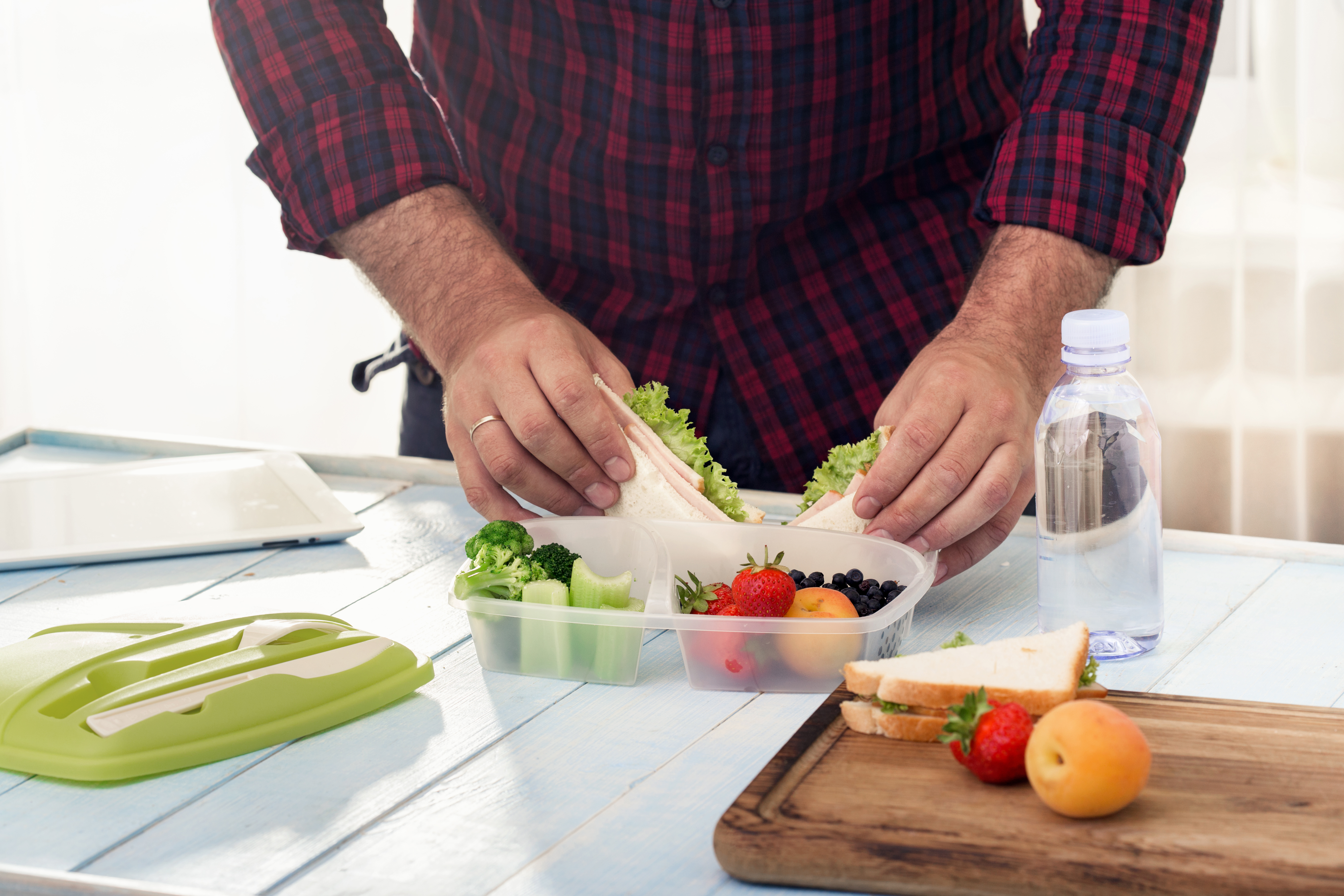Dietitian Anne’s tips for creating a healthy lunchbox

Anne Finch is a dietitian for the Cancer Council WA and has previously worked in oncology, refugee and pregnancy health.
For the last ten years, Anne has been working in public health and health promotion. She is a mum of twin boys (5) and has just started her lunch-packing journey. She shares her advice on all things lunchboxes.
Q1 - What do you think is the most important thing to remember when packing a healthy lunchbox?
The short and practical answer is trying to hit all the food groups (vegies, fruit, grains, dairy and alternatives, and meat and alternatives). That’s what I use to help me figure out “whaaaaat am I going to put in this flippin’ lunchbox?!?”.
The long answer is… that what you put in the lunchbox (or what gets eaten) isn’t a measure of your worth as a parent! What’s in the lunchbox is only one part of the big picture of raising confident and adventurous eaters (which is only one part of raising a happy and healthy child).

Q2- What are some staple snack options for your kid’s lunchboxes?
- Chopped fruit and vegies – I like to put them in the same container. Grapes, sliced cucumber, and capsicum are favourites. One of my kids demolishes corn on the cob, and the other likes edamame (I buy the frozen, shelled ones).
- Trail mix – pepitas, a little dried fruit and some kind of grainy thing (e.g. cheerios or other wholegrain cereal, soy snacks, popcorn, pretzels, grainy crackers).
- Leftover porridge, chia pudding, yoghurt + muesli, or “rice pudding” (leftover rice + milk + dried fruit and desiccated coconut).
- I make and freeze baked goodies when I have time. Muesli slices, pikelets, mini muffins - that kind of thing. Oh, and I stock up on mini-hot-cross buns too. We’re still eating them (in July 😆).
Q3- What do you do when the lunchbox comes back full?
Lunchbox leftovers = after-school snack, or sometimes served on a plate in the middle of the table at dinner (I hate food waste!). We use a pretty hefty ice brick, and the food is usually still cool to the touch (and tend to be low-risk for food safety concerns e.g. cut fruit and veg, crackers).
If it’s a new food (or not an established favourite), I ask about whether they tried it/ liked it/ could easily eat it.
I also remind myself of the long answer in Q1 – a full lunchbox doesn’t mean anything about our parenting (or our kids’ kidding 😊). In our house, we really try our best to let the kids choose how much they eat, so aim not to make a big deal of unfinished food, or pressure them to clear the plate.
Q4- Does your child ask questions or make comments such as these ‘Why does my lunch box look different to other kids’ or ‘My friend has shapes/chocolate every day, why can’t I?” What is your response?
|
Different families eat different foods. I think that’s an age-appropriate answer that’s keeping them satisfied for now, at least? I do anticipate that will get trickier as they get older! |
 |
Q5- What are some tips you have for healthy without too much fuss?
- Little reusable containers save us time, money, plastic waste, and brain space! I make a big bowl of trail mix, portion them up and have those ready to go.
- We alternate that with frozen baked goodies. Put them in the lunchbox frozen and they’re good to eat by recess.
- I often chop up vegies for lunchboxes at the same time as making dinner/ other snacks. Pop them in a container with a wet paper towel and they’re good for a couple of days in the fridge.
- Hot tips for fruit + veg that require zero prep
- Tinned baby corn spears
- Bananas and mandarins have their own wrapper!
- Frozen edamame
- Cherry tomatoes
- Grapes, berries, and plums (in season)
- Mini apples and pears (my little guys leave too much behind on the full-sized fruit, so if we have big ones, I’ll chop them)
If you want to learn more about how to pack a healthy lunchbox, we run a parent nutrition session for WA parents. Register your interest here.
